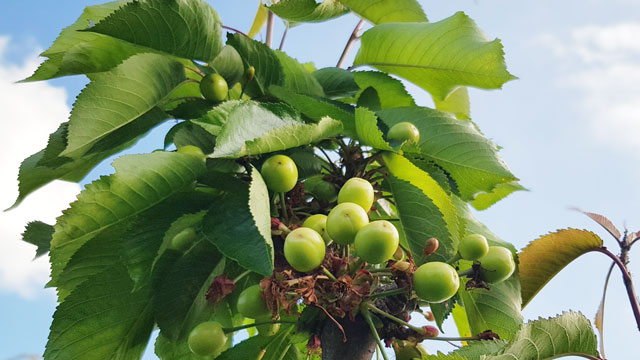The 3-monthly outlook by the Bureau of Meteorology predicts that wetter than average conditions are likely to continue in most Australian cherry growing regions.
Consider what this might mean for the general health of the trees, the leaves, and most importantly the fruit.
Soil moisture and rain cracking prevention were covered in last month’s issue of this column.
Fungal diseases
Rain events over 25 to 40 millimetres tend to have a diluting effect on the spray coverage protecting both leaves and cherries from disease.
Regular vigilant inspections to check for any disease before it becomes a larger outbreak, is good management.
Check your spray program and check if rain has prevented or delayed a timely cover-spray from being applied. Should an unexpected outbreak of disease occur: identify it and select the correct fungicide before application. Always adhere to the label advice.
Insect pests
After solid rain, we are likely to get warmer weather with some sunshine resulting in insect populations—be it plague thrip, jassids or aphis —quickly spreading in just a few days.
The trained eye of the orchard manager or staff is crucial to identifying and logging the location of any outbreak, and starting timely action, namely spraying to control an outbreak before it becomes a serious problem.
Bacterial gummosis (Pseudomonas syringae)
It is possible that branches of cherry trees could be infected by bacterial gummosis that may have been lying benign and not visible.
Wetter and more humid conditions at this time of year can induce an infection.
A badly infected limb should be cut out and destroyed as the bacteria involved may spread further in the orchard.
It is apparent that the usual copper sprays in some parts of the world such as Oregon USA, are not controlling the outbreaks and may make the situation worse.
Get sprays on
Finally, if the tractor and spray rig are going to make a muddy mess and bog in the orchard, think about spraying by helicopter. If you are not a ‘big’ orchard, think about working with a neighbour that may have a similar problem and work together.
The most important reason to properly manage these risks this season is the monetary value of the fresh healthy cherry crop, and the timely harvesting packing and distribution to domestic and overseas markets.
See this article in Tree Fruit Oct 2022




















